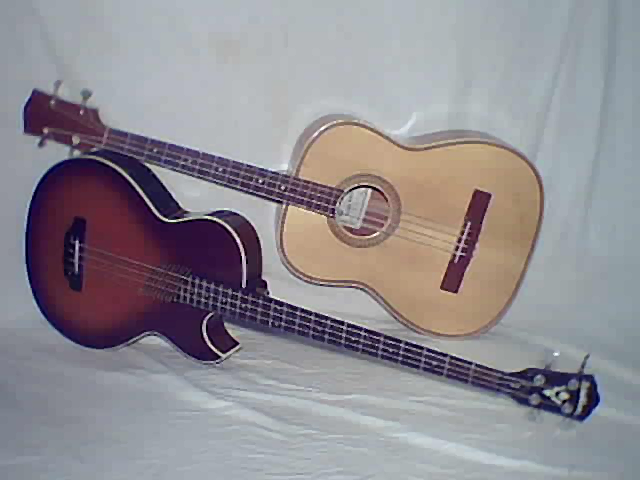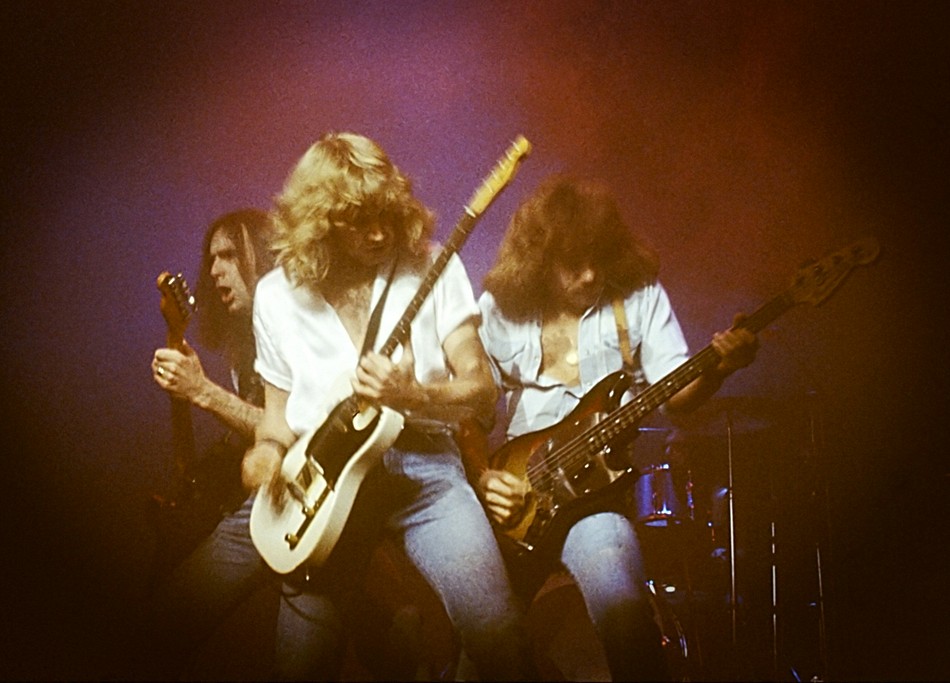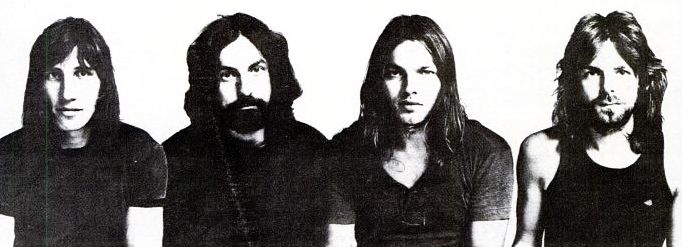|
The Secret Language Of Birds
''The Secret Language of Birds'' is the third studio album by Jethro Tull frontman Ian Anderson, released in 2000. It is named after the dawn chorus, the natural sound of birds heard at dawn, most noticeably in the spring. Track listing #"The Secret Language of Birds" – 4:17 #"The Little Flower Girl" – 3:37 #"Montserrat" – 3:21 #"Postcard Day" – 5:07 #"The Water Carrier" – 2:56 #"Set-Aside" – 1:29 #"A Better Moon" – 3:46 #"Sanctuary" – 4:42 #"The Jasmine Corridor" – 3:54 #"The Habanero Reel" – 4:01 #"Panama Freighter" – 3:21 #"The Secret Language of Birds, PT. II" – 3:06 #"Boris Dancing" – 3:07 #"Circular Breathing" – 3:45 #"The Stormont Shuffle" – 3:20 # Extra Track Intro (unlisted) – 0:08 # "In the Grip of Stronger Stuff" (unlisted bonus track on US release. Recorded by Dutch TV for '2 Meter Sessies', 19 October 1999. Broadcast 23 December) – 2:50 # "Thick as a Brick" (unlisted bonus track on US release. Recorded by Dutch TV for '2 Meter Se ... [...More Info...] [...Related Items...] OR: [Wikipedia] [Google] [Baidu] |
Ian Anderson (singer And Musician)
Ian Scott Anderson (born 10 August 1947) is a British musician, singer and songwriter best known for his work as the lead vocalist, flautist, acoustic guitarist and leader of the British rock band Jethro Tull. He is a multi-instrumentalist who, in addition to flute and acoustic guitar, plays keyboards, electric guitar, bass guitar, bouzouki, balalaika, saxophone, harmonica and a variety of whistles. His solo work began with the 1983 album ''Walk into Light''; since then he has released another five works, including the sequel to the Jethro Tull album ''Thick as a Brick'' (1972) in 2012, titled ''Thick as a Brick 2''. Early life Ian Anderson was born in Dunfermline, Fife, Scotland, the youngest of three brothers, to an English mother and a Scottish father. Anderson said, "I am a Brit. I’m a Brit. I see myself as a product of that union." His father, James Anderson, ran the RSA Boiler Fluid Company in East Port, Dunfermline. Anderson's family moved to Edinburgh when he was ... [...More Info...] [...Related Items...] OR: [Wikipedia] [Google] [Baidu] |
Scotch Bonnet
Scotch bonnet (also known as Bonney peppers, or Caribbean red peppers) is a variety of chili pepper named for its supposed resemblance to a Scottish tam o' shanter bonnet. It is ubiquitous in West Africa as well as the Caribbean. Like the closely related habanero, Scotch bonnets have a heat rating of 100,000–350,000 Scoville units. For comparison, most jalapeño peppers have a heat rating of 2,500 to 8,000 on the Scoville scale. However, completely sweet varieties of Scotch bonnet called cachucha peppers are grown on some of the Caribbean islands. Scotch bonnets are used to flavor many dishes and cuisines worldwide and are often used in hot sauces and condiments. The Scotch bonnet has a sweeter flavor and stouter shape, distinct from its habanero relative with which it is often confused, and gives jerk dishes (pork/chicken) and other Caribbean dishes their unique flavor. Scotch bonnets are mostly used in Sri Lankan, Maldivian, West African, Antiguan, Kittitian/Nevisian, ... [...More Info...] [...Related Items...] OR: [Wikipedia] [Google] [Baidu] |
Mandolin
A mandolin ( it, mandolino ; literally "small mandola") is a stringed musical instrument in the lute family and is generally plucked with a pick. It most commonly has four courses of doubled strings tuned in unison, thus giving a total of 8 strings, although five (10 strings) and six (12 strings) course versions also exist. There are of course different types of strings that can be used, metal strings are the main ones since they are the cheapest and easiest to make. The courses are typically tuned in an interval of perfect fifths, with the same tuning as a violin (G3, D4, A4, E5). Also, like the violin, it is the soprano member of a family that includes the mandola, octave mandolin, mandocello and mandobass. There are many styles of mandolin, but the three most common types are the ''Neapolitan'' or ''round-backed'' mandolin, the ''archtop'' mandolin and the ''flat-backed'' mandolin. The round-backed version has a deep bottom, constructed of strips of wood, glued togethe ... [...More Info...] [...Related Items...] OR: [Wikipedia] [Google] [Baidu] |
Acoustic Bass Guitar
The acoustic bass guitar (sometimes shortened to acoustic bass or initialized ABG) is a bass instrument with a hollow wooden body similar to, though usually larger than a steel-string acoustic guitar. Like the traditional electric bass guitar and the double bass, the acoustic bass guitar commonly has four strings, which are normally tuned E-A-D-G, an octave below the lowest four strings of the 6-string guitar, which is the same tuning pitch as an electric bass guitar. Because it can sometimes be difficult to hear an acoustic bass guitar without an amplifier, even in settings with other acoustic instruments, most acoustic basses have pickups, either magnetic or piezoelectric or both, so that they can be amplified with a bass amp. Traditional music of Mexico features several varieties of acoustic bass guitars, such as the guitarrón, a very large, deep-bodied Mexican 6-string acoustic bass guitar played in Mariachi bands, the león, plucked with a pick, and the bajo sexto, wit ... [...More Info...] [...Related Items...] OR: [Wikipedia] [Google] [Baidu] |
Bouzouki
The bouzouki (, also ; el, μπουζούκι ; alt. pl. ''bouzoukia'', from Greek ), also spelled buzuki or buzuci, is a musical instrument popular in Greece. It is a member of the long-necked lute family, with a round body with a flat top and a long neck with a fretted fingerboard. It has steel strings and is played with a plectrum producing a sharp metallic sound, reminiscent of a mandolin but pitched lower. There are two main types of bouzouki: the ''trichordo'' (''three-course'') has three pairs of strings (known as courses) and the ''tetrachordo'' (''four-course'') has four pairs of strings. The instrument was brought to Greece in the early 1900s by Greek refugees from Anatolia, and quickly became the central instrument to the rebetiko genre and its music branches. It is now an important element of modern Laïko pop Greek music. Etymology The name ''bouzouki'' comes from the Turkish word , meaning "broken" or "modified", and comes from a particular re-entrant tuning ca ... [...More Info...] [...Related Items...] OR: [Wikipedia] [Google] [Baidu] |
Flute
The flute is a family of classical music instrument in the woodwind group. Like all woodwinds, flutes are aerophones, meaning they make sound by vibrating a column of air. However, unlike woodwind instruments with reeds, a flute is a reedless wind instrument that produces its sound from the flow of air across an opening. According to the instrument classification of Hornbostel–Sachs, flutes are categorized as edge-blown aerophones. A musician who plays the flute is called a flautist or flutist. Flutes are the earliest known identifiable musical instruments, as paleolithic examples with hand-bored holes have been found. A number of flutes dating to about 53,000 to 45,000 years ago have been found in the Swabian Jura region of present-day Germany. These flutes demonstrate that a developed musical tradition existed from the earliest period of modern human presence in Europe.. Citation on p. 248. * While the oldest flutes currently known were found in Europe, Asia, too, has ... [...More Info...] [...Related Items...] OR: [Wikipedia] [Google] [Baidu] |
Pictures Of Matchstick Men
"Pictures of Matchstick Men" is the first hit single by Status Quo, released on 5 January 1968. The Status Quo version The song reached number 7 in the British charts, number 8 in Canada, and number 12 on the ''Billboard'' Hot 100, becoming their only Top 40 single in the United States. Francis Rossi confirmed on DVD2 of the Pictures set that it was originally intended to be a B-side to "Gentleman Joe's Sidewalk Cafe", but it was decided to swap the B-side and the A-side of the single. There are two versions, one in stereo and another in mono, with significant differences: the original single was in mono and has the trademark wah-wah guitar in the breaks between lyrics, but this is omitted in stereo. The song opens with a single guitar repeatedly playing a simple four-note riff before the bass, rhythm guitar, organ, drums and vocals begin. "Pictures of Matchstick Men" is one of a number of songs from the late 1960s which feature the flanging audio effect. The band's next sing ... [...More Info...] [...Related Items...] OR: [Wikipedia] [Google] [Baidu] |
Status Quo (band)
Status Quo are a British rock band that formed in 1962. The group originated in London as The Scorpions and was founded by Francis Rossi and Alan Lancaster while they were still schoolboys. After a number of lineup changes, which included the introduction of Rick Parfitt in 1967, the band became The Status Quo in 1967 and Status Quo in 1969. As of 2022, the group have been active for 60 consecutive years (despite announcing a breakup in 1984, they would play Live Aid the following year and resume normal activities in 1986). They have had over 60 chart hits in the UK - more than any other rock band - including "Pictures of Matchstick Men", "Down Down", "Rockin' All Over the World", " Whatever You Want", " In the Army Now", and "What You're Proposing". Twenty-two of these reached the Top 10 in the UK Singles Chart, and fifty-seven reached the Top 40. They have released over 100 singles and 33 albums, most of which were bestsellers. Since reaching number 5 on the UK albums chart i ... [...More Info...] [...Related Items...] OR: [Wikipedia] [Google] [Baidu] |
Learning To Fly (Pink Floyd Song)
"Learning to Fly" is a song by the English progressive rock band Pink Floyd, written by David Gilmour, Anthony Moore, Bob Ezrin, and Jon Carin. It was the first single from the band's thirteenth studio album ''A Momentary Lapse of Reason''. It reached number 70 on the U.S. ''Billboard'' Hot 100 chart and number 1 on the ''Billboard'' Album Rock Tracks chart in September, 1987, remaining three consecutive weeks at the top position in the autumn of the same year. Meanwhile, the song failed to chart on the official U.K. top 40 singles charts. On the other hand, in Spain, the song peaked at number 1 on the Los 40 Principales chart. Background The song was primarily written by David Gilmour, who developed the music from a 1986 demo by Jon Carin, while the lyrics were written by Anthony Moore. The notable rhythm pattern at the beginning of the song was already present in the demo, and Carin stated that it was influenced by Steve Jansen or Yukihiro Takahashi. The inspiration for t ... [...More Info...] [...Related Items...] OR: [Wikipedia] [Google] [Baidu] |
Pink Floyd
Pink Floyd are an English rock band formed in London in 1965. Gaining an early following as one of the first British psychedelic music, psychedelic groups, they were distinguished by their extended compositions, sonic experimentation, philosophical lyrics and elaborate Pink Floyd live performances, live shows. They became a leading band of the progressive rock genre, cited by some as the greatest progressive rock band of all time. Pink Floyd were founded in 1965 by Syd Barrett (guitar, lead vocals), Nick Mason (drums), Roger Waters (bass guitar, vocals), and Richard Wright (musician), Richard Wright (keyboards, vocals). Under Barrett's leadership, they released two charting singles and the successful debut album ''The Piper at the Gates of Dawn'' (1967). Guitarist and vocalist David Gilmour joined in December 1967; Barrett left in April 1968 due to deteriorating mental health. Waters became the primary lyricist and thematic leader, devising the concept album, concepts behind ... [...More Info...] [...Related Items...] OR: [Wikipedia] [Google] [Baidu] |
Red Square
Red Square ( rus, Красная площадь, Krasnaya ploshchad', ˈkrasnəjə ˈploɕːətʲ) is one of the oldest and largest squares in Moscow, the capital of Russia. Owing to its historical significance and the adjacent historical buildings, it is regarded as one of the most famous squares in Europe and the world. It is located in Moscow's historic centre, in the eastern walls of the Kremlin. It is the city landmark of Moscow, with iconic buildings such as Saint Basil's Cathedral, Lenin's Mausoleum and the GUM. In addition, it has been a UNESCO World Heritage Site since 1990. Location The Red Square has an almost rectangular shape and is 70 meters wide and 330 meters long. It extends lengthways from northwest to southeast along part of the wall of the Kremlin that forms its boundary on the southwest side. In the northeast, the square is bounded by the GUM department store building and the old district of Kitai-Gorod, in the northwest by the State Historical Museum a ... [...More Info...] [...Related Items...] OR: [Wikipedia] [Google] [Baidu] |





